Oil leaks are one of the most dreaded issues car owners face. They’re messy, they often smell terrible, they can lead to costly repairs, and worst of all, they can signal the beginning of more serious engine problems.
Whether you’re dealing with puddles under your vehicle, burnt oil odors creeping into the cabin, or simply watching your oil light flicker more often than it should, a leaking engine is more than just an inconvenience — it’s a warning sign.
The frustrating thing is that oil leaks are surprisingly common, even in relatively modern cars. From gaskets and seals that fail over time to poor engine ventilation systems and subpar materials used during manufacturing, there are a variety of reasons oil may start to seep from your engine.
Unfortunately, not all vehicles are created equal in this department. Some engines are notorious for their inability to hold oil over the long haul, while others remain impressively clean and dry well past 200,000 miles.
In the world of internal combustion engines, sealing oil is an art just as much as it is a science. Manufacturers must balance cost, weight, heat dissipation, and accessibility. A vehicle might be designed for speed, efficiency, or luxury — but sometimes, those design goals come at the expense of long-term reliability.
The vehicles that succeed in remaining oil-tight usually feature robust gaskets, precision machining, excellent thermal control, and a bit of thoughtful engineering. Others, on the other hand, fall short — often plagued by recurring leaks, poorly designed components, and excessive crankcase pressure.
This guide takes a hard look at both sides of that equation. We’ll break down five cars with engines that have earned a reputation for staying sealed, and five cars known for constantly leaking oil — even with proper maintenance. These rankings are based on common failure points, real-world owner reports, mechanic testimonials, and overall longevity.
While every vehicle can eventually develop a leak with enough miles, the ones listed here under the “leak-free” category tend to resist it far better than their peers. Conversely, the leak-prone models often begin developing problems early and continue to struggle even after repairs.
The vehicles featured as leak-resistant — like the Toyota Corolla or Honda Accord — aren’t just affordable and efficient; they demonstrate long-term reliability in one of the most overlooked but important ways. Their engines run clean and dry, mile after mile, due to smart design and proven engineering. That means fewer unexpected service visits, lower repair costs, and peace of mind for the owner.
On the flip side, models like the BMW E90, early Subaru Outbacks, and the Land Rover Freelander suffer from flawed gasket designs, problematic oil systems, or poorly executed engine layouts that make leaks all but inevitable.
In many of these cases, the cost of fixing an oil leak is high not just because of the part price — but because getting to the leaking part involves hours of disassembly. That raises the total repair bill, frustrates owners, and diminishes the ownership experience.
Of course, it’s important to note that oil leaks don’t always mean your engine is doomed. Some are minor, slow, and easily repaired. Others, however, can escalate quickly if ignored, damaging belts, fouling sensors, or reducing oil pressure to the point of mechanical failure.
Knowing which cars are likely to develop these issues — and which ones are likely to avoid them — can help buyers make better decisions and owners prepare for the road ahead.
Whether you’re looking to buy a used car, evaluating your current ride, or just curious about automotive durability, this guide aims to give you the real-world insight you need. Reliability isn’t just about whether a car starts — it’s about how well it ages. And few issues age an engine faster than an unrelenting oil leak.
Also Read: 5 Pickups With Best Front-Driving Visibility and 5 With Big Blind Zones
5 Cars With Engines That Don’t Leak Oil
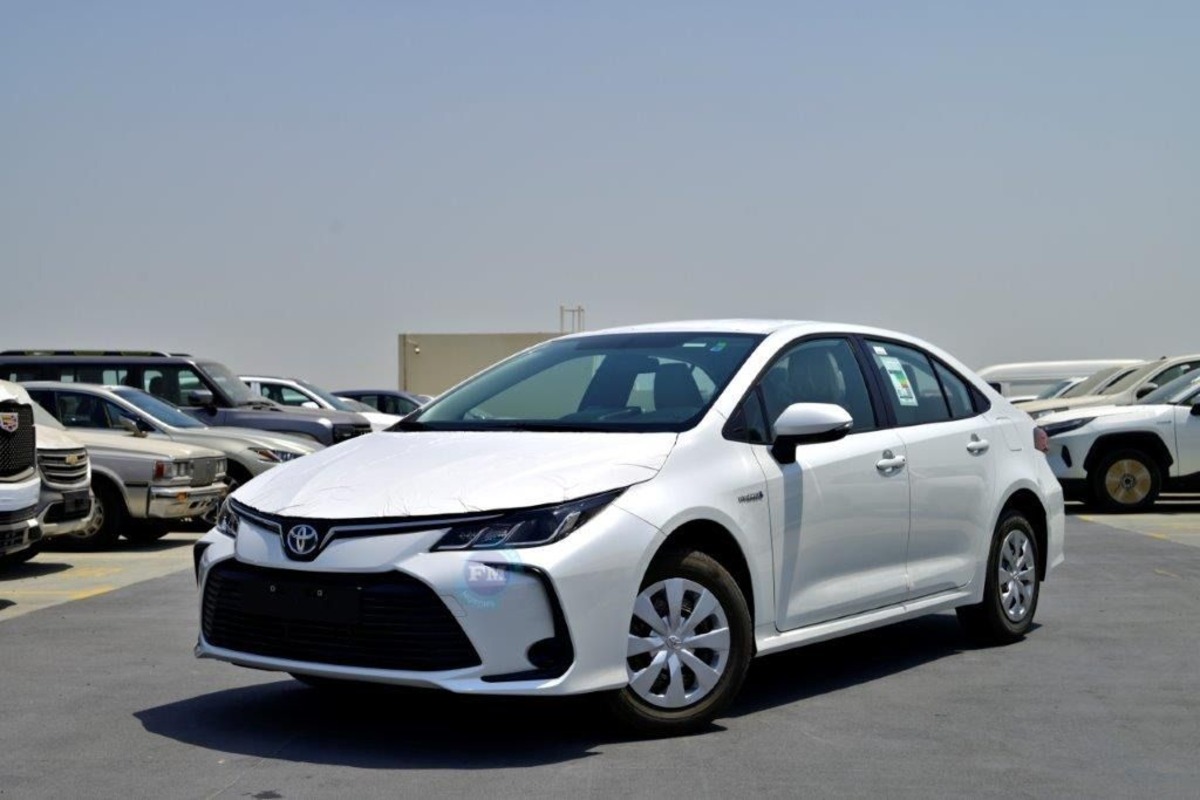
1: Toyota Corolla (1.8L 4-Cylinder)
The Toyota Corolla has long been a benchmark for reliability in the compact car segment. Central to its reputation is the 1.8L 4-cylinder engine — particularly the 1ZZ-FE and its successor, the 2ZR-FE.
These engines are marvels of efficiency and resilience, known for their simple, robust construction that minimizes the risk of oil leaks even after many years of use. Toyota’s attention to gasket quality and mechanical fitment plays a major role in how well these engines hold oil over time.
One of the major advantages of the Corolla’s 1.8L engine is the conservative operating parameters it follows. It doesn’t run excessively hot, isn’t turbocharged, and rarely endures high RPMs in normal driving.
This keeps the internal pressures and thermal cycles in check, which helps preserve the integrity of valve cover gaskets, timing chain cover seals, and oil pan gaskets. These components remain flexible and less prone to cracking or warping over time.
Toyota also engineered the engine to reduce complexity and exposure to high stress at critical sealing points. For example, the valve cover gasket — a notorious leak site in other engines — is mounted with a balanced number of bolts and is easily accessible for maintenance, encouraging early repairs if issues ever do arise.
The timing chain is enclosed in a durable housing with a well-sealed cover, eliminating problems seen in belt-driven engines that use weaker materials or tensioner systems prone to oil seepage.
Another advantage of this engine is its ability to maintain internal cleanliness. Sludge buildup can cause pressure changes that stress seals, but the Corolla engine’s well-regulated oil flow and clean combustion prevent contaminants from compromising gasket integrity. Even engines subjected to extended oil change intervals tend to stay relatively clean, which is a testament to the internal oiling system’s efficiency.
In long-term ownership studies and mechanic reports, Toyota Corollas consistently rank at the top for low maintenance costs and rare engine leaks.
It’s common to find 1.8L engines still running strong at 200,000 or even 300,000 miles with only routine maintenance — and with no visible oil leaks. This isn’t just anecdotal; Toyota’s internal quality control and extensive testing ensure long-term seal durability.
Moreover, many DIY mechanics favor the Corolla for its engine accessibility. When repairs or inspections are necessary, there’s minimal disassembly involved, which reduces the chances of accidental gasket damage or poor reinstallation. This ease of maintenance further contributes to leak-free longevity, especially when combined with quality parts and careful assembly.
Ultimately, the Toyota Corolla’s 1.8L engine doesn’t just resist leaks — it sets a high standard for engine reliability. Whether you’re buying new or used, this vehicle remains one of the safest bets for worry-free operation with minimal oil-related issues.
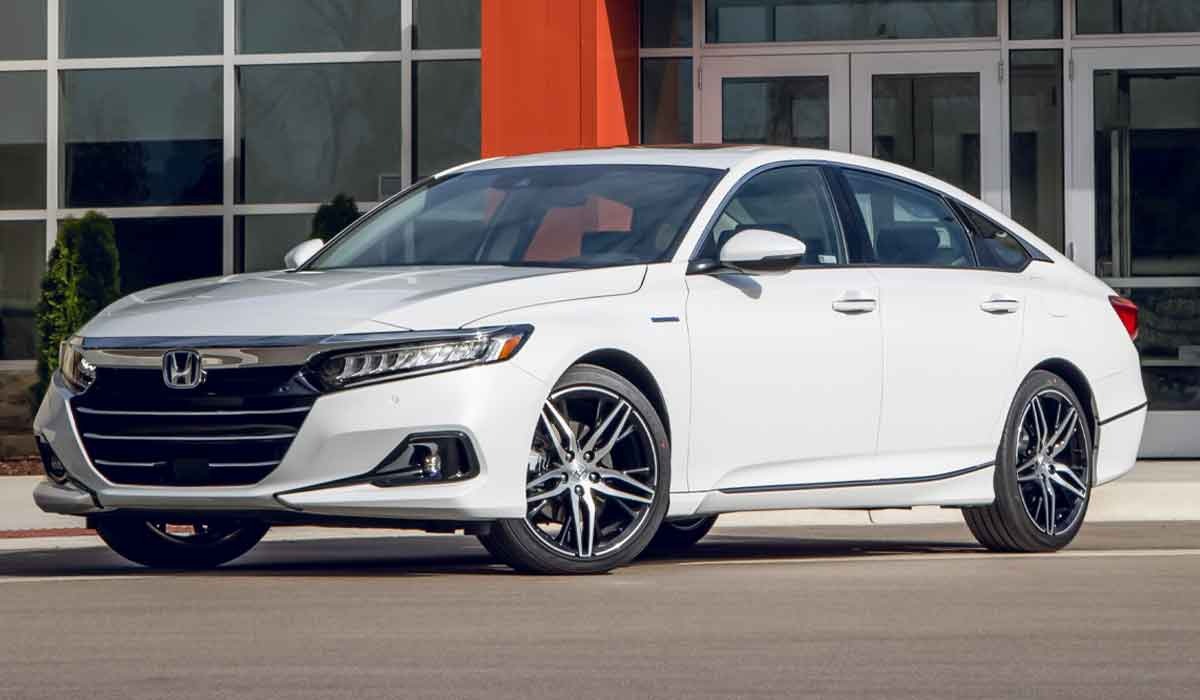
2: Honda Accord (2.4L K-Series Engine)
The Honda Accord’s K24 engine, found in models spanning the early 2000s through mid-2010s, is one of the most well-respected engines in Honda’s lineup — and for good reason.
It pairs strong performance with a rock-solid reputation for mechanical reliability, particularly when it comes to sealing integrity. Oil leaks are rare, even as the engine ages, thanks to careful engineering and Honda’s legacy of high-precision manufacturing.
The K24 engine block and head are both made of aluminum, which might sound like a weakness due to thermal expansion — but Honda’s solution is precise machining and high-quality materials for gaskets and seals.
Valve cover gaskets are made of durable rubber compounds that maintain flexibility for years. Additionally, the cylinder head design ensures a snug seal without requiring constant retorquing, which is often necessary in lesser engines to prevent leaks.
Honda paid particular attention to the PCV system, which regulates crankcase pressure — a common contributor to oil leaks in other vehicles.
A blocked or poorly designed PCV valve can cause pressure to build up inside the engine, forcing oil past seals. The K24 system stays functional even at high mileage, keeping pressures normalized and seals intact. This is often an overlooked reason why these engines stay dry — it’s not just the materials, but the airflow engineering.
Another important detail is the design of the timing chain cover and oil pan gaskets. Honda uses a layered application of silicone and rubber composite materials that resist heat fatigue, even after 150,000+ miles.
Compared to cheaper felt or cork gaskets used in some competing brands, Honda’s solution is significantly more durable. Mechanics often note how clean these engines are, even when they’ve never had a gasket replaced.
This engine’s reputation has also benefited from its wide use across Honda’s lineup. The K-series was not limited to the Accord but was found in CR-Vs, Elements, and even the Acura TSX. With millions of units on the road, real-world data confirms its reliability over time. Reports of oil leaks are almost always tied to neglect or improper service, rather than any design flaw.
Another great benefit for owners is the aftermarket support and ease of maintenance. Honda engines are famously accessible, and parts are widely available. Gaskets, when needed, are inexpensive and simple to replace due to the engine’s logical layout. This makes preventive maintenance easy, allowing owners to proactively address wear before it ever becomes a leak.
In essence, the K24 engine is a rare blend of user-friendliness, performance, and leak-free durability. It’s a standout example of how thoughtful engineering can extend the life of critical components and minimize common frustrations like oil loss and staining. If leak-free longevity is your priority, the Honda Accord with the 2.4L engine is a top-tier choice.

3: Lexus RX 350 (3.5L V6 2GR-FE)
The 3.5L 2GR-FE V6 engine found in the Lexus RX 350 is a masterclass in modern engine durability and oil retention. Developed by Toyota and used across several Lexus and Toyota vehicles, this engine has proven over hundreds of thousands of miles to be among the most leak-resistant V6 engines ever made.
For luxury SUV buyers who expect quiet operation, smooth power delivery, and mechanical reliability, this engine delivers — and then some. One of the standout features of the 2GR-FE engine is its use of metal-on-metal mating surfaces combined with high-grade RTV silicone sealants instead of traditional gaskets in many critical areas.
For instance, the timing chain cover — a common source of leaks in V6 engines — is sealed not with a paper or rubber gasket but with an industrial-grade sealant applied at the factory under precision conditions. This results in an extremely tight, permanent bond that resists high heat, pressure, and vibration.
Unlike many V6s, the 2GR-FE has no inherent weak points when it comes to oil sealing. The valve cover gaskets are made from advanced rubber polymers that retain their shape and flexibility even after years of engine heat exposure.
Furthermore, the engine design distributes load and pressure across these gaskets evenly, minimizing the likelihood of warping or loosening over time. Even after 150,000 miles, many RX 350s show no signs of seepage from the top of the engine — something even luxury European brands often can’t claim.
Another reason for the 2GR-FE’s reputation is Lexus’s broader philosophy of overbuilding rather than cost-cutting. The engine isn’t just built to last — it’s built to perform flawlessly with minimal owner intervention.
Owners routinely report that the engine bay stays dry for well over a decade, requiring nothing more than standard oil changes. For a vehicle that blends utility, comfort, and power, this engine’s no-leak legacy is a testament to intelligent luxury engineering.
It’s also worth noting that the oil pan and rear main seal — areas that typically develop leaks due to thermal expansion and flexing — have proven remarkably resilient in this engine.
The oil pan design includes a multi-bolt pattern for even torque distribution and reduced vibration, which keeps the seal intact even under hard driving. The rear main seal, a critical and often expensive failure point on other vehicles, rarely fails on this Lexus engine unless due to improper installation or catastrophic neglect.
From the perspective of long-term ownership, the RX 350 is the ideal mix of comfort and durability. While some may consider luxury vehicles to be maintenance headaches, Lexus subverts that trend entirely.
This is a vehicle that not only coddles its occupants but also requires almost nothing from its owner — including repairs for pesky oil leaks. For those seeking a luxury SUV that can truly go the distance, the RX 350 stands in a class of its own.

4: Subaru Outback (FB25 Engine – 2015 and Newer)
Subaru’s transition from the older EJ-series engines to the FB-series — specifically the FB25 — marked a pivotal change in reliability and design philosophy.
While early Subarus (pre-2012) were notorious for oil leaks, head gasket failures, and valve cover seepage, the FB25 engine, particularly in Outbacks from 2015 onward, corrected these flaws with a cleaner, more durable layout that emphasizes long-term oil retention.
The FB25 ditched many of the legacy design issues that plagued the EJ engines. For starters, the valve covers were redesigned to provide a tighter, more even seal using a better-quality gasket material that resists both shrinkage and brittleness.
The bolt layout was re-engineered to distribute clamping force more evenly across the valve cover, a change that alone solved a major source of leaks in older models. This seemingly simple improvement greatly increased long-term gasket integrity.
Subaru also improved the crankcase ventilation system in the FB25, which reduced internal pressures that typically push oil past seals and gaskets.
The updated PCV design manages oil vapor and pressure more effectively, ensuring that gaskets aren’t constantly fighting back-pressure — a major issue with the EJ engines. This change dramatically reduced the potential for leaks from camshaft seals and the rear main seal.
Another major advancement was Subaru’s switch to a timing chain instead of a timing belt. This change eliminated the need for external timing covers sealed with rubber gaskets that degraded over time.
Timing chains, being fully enclosed in a sealed oil bath, benefit from Subaru’s use of long-lasting sealing materials that rarely fail. As a result, one of the most common leak points in prior Subaru engines was completely removed from the equation.
Heat management was also improved in the FB25, as Subaru reworked the cooling passages and radiator system to reduce hotspots around the head gasket area.
Excess heat is one of the key drivers of gasket failure, and by lowering peak temperatures around critical sealing surfaces, Subaru ensured that the engine runs cooler and more consistently. Owners of FB25 Outbacks frequently report dry, clean engines even after 100,000 miles or more — a big turnaround for the brand.
In addition, many mechanics have noted that Subaru also improved manufacturing tolerances across the board. The FB engines are built with tighter specs and cleaner machining, which means surfaces fit together with less variation and lower risk of improper sealing.
The combination of better design, upgraded materials, and smarter cooling has earned the FB25-powered Outback a reputation as a reliable, oil-tight workhorse for adventurous drivers and long-distance commuters alike.
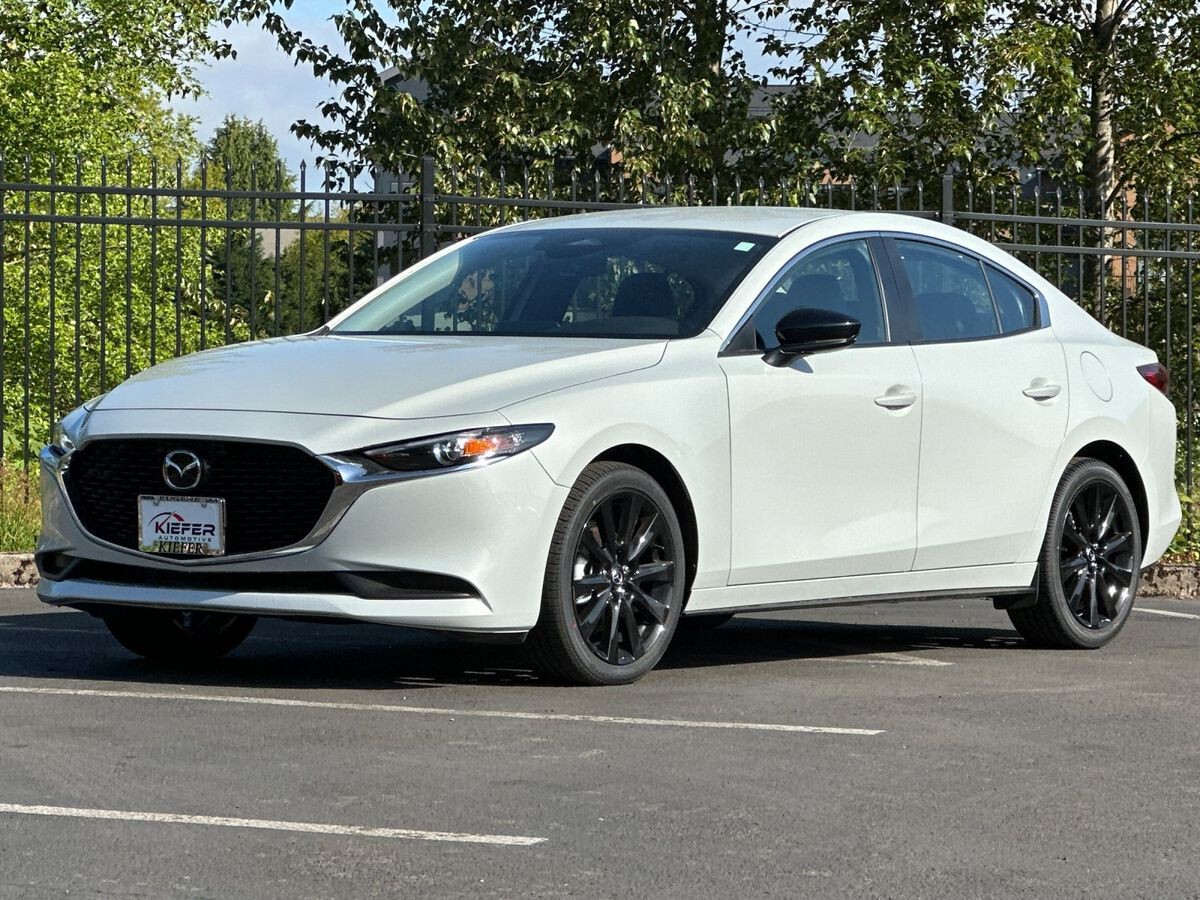
5: Mazda3 (Skyactiv-G 2.0L and 2.5L Engines)
The Mazda3, particularly with its Skyactiv-G 2.0L and 2.5L engines, represents a new age of Japanese engineering — one that blends fuel efficiency with exceptional mechanical reliability.
These engines were part of Mazda’s reinvention of itself in the early 2010s, and leak resistance was a key design goal. As a result, Skyactiv engines are widely known for staying dry and free of oil leaks, even well into six-figure mileage.
One of the major factors behind this success is the use of ultra-precise low-friction internals that generate less heat and mechanical stress.
This has a direct impact on the durability of gaskets and seals, which tend to degrade more quickly in engines that run hot or operate under high pressure. The Skyactiv engines avoid this by staying within narrow operating ranges, aided by advanced cooling systems and low-compression burn strategies.
Mazda also rethought the basic architecture of the engine for durability and maintainability. Instead of relying on multiple mating surfaces with potential leak points, the Skyactiv-G block and head are designed with integrated components where possible.
The fewer joints and mating surfaces, the fewer places oil can escape — and this streamlined approach has paid off. Valve covers, timing chain housings, and oil pans are all secured with multi-point clamping systems that maintain torque over time, reducing the risk of weeping gaskets.
Another smart move by Mazda was the use of advanced synthetic gaskets and heat-resistant polymers, particularly in the valve cover and front cover seals.
These materials don’t harden or crack the way older rubber gaskets do, especially in turbocharged or high-output engines. Even in the larger 2.5L version used in the Mazda3 and CX-5, oil leaks are extremely rare unless the engine has been poorly maintained or damaged in a collision.
Mazda also benefited from implementing tighter quality control protocols during engine assembly in its Japanese and Mexican plants. These improvements reduced manufacturing variance and improved the fitment of engine components across the board.
As a result, most Skyactiv engines leave the factory with zero seal imperfections, and they hold up well even with less-than-perfect service intervals.
Skyactiv engines are also relatively easy to work on, which helps owners and mechanics avoid introducing leaks during maintenance. Poor gasket reinstallation is a leading cause of new leaks in other brands, but Mazda’s logical layout, intuitive access points, and clear torque specs make it harder to mess up a repair. This user-friendly design supports long-term reliability.
In sum, the Mazda3 with a Skyactiv-G engine offers not just excellent gas mileage and responsive handling, but also a virtually leak-proof ownership experience. It’s a compact car built for the long haul — clean, efficient, and refreshingly dependable.
5 That Constantly Do
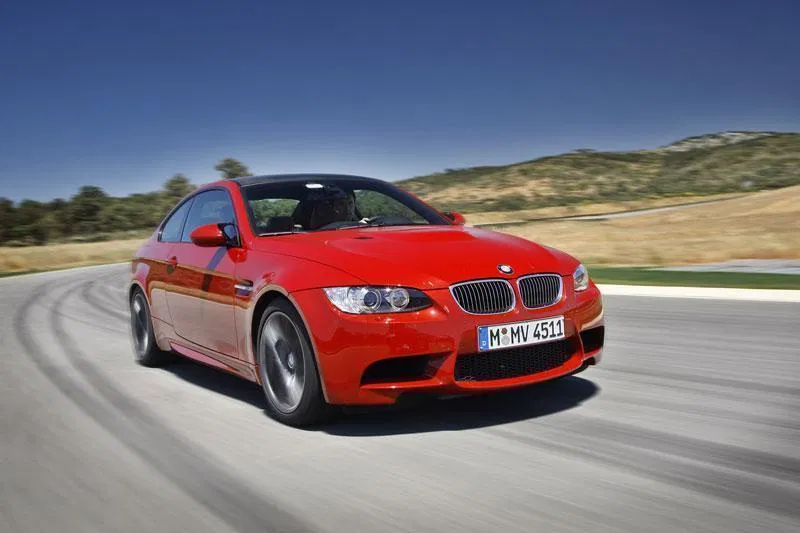
1: BMW 3 Series (E90, E92 – N52 and N54 Engines)
The BMW 3 Series from the mid-to-late 2000s — particularly the E90 and E92 models equipped with the N52 (naturally aspirated) and N54 (turbocharged) inline-six engines — are infamous for oil leaks.
Despite their silky-smooth performance and engineering pedigree, these engines are plagued with long-term sealing issues that become expensive and labor-intensive to repair. What starts as a small oil film around the valve cover can eventually turn into a full-blown drip from multiple points.
A common culprit is the valve cover gasket, which begins to harden and crack as early as 60,000 to 80,000 miles. This component sits directly above the exhaust manifold, causing it to endure high temperatures.
BMW used rubber gasket materials that do not tolerate heat cycling well over time. Once the gasket fails, oil begins leaking onto the hot manifold, leading to a burning oil smell and smoke — a signature problem that nearly every N52/N54 owner experiences at some point.
Another notorious failure point is the oil filter housing gasket. This gasket connects the oil filter housing to the engine block and also runs coolant lines, so a leak here can lead to both oil loss and potential contamination.
The gasket flattens over time and eventually fails, causing oil to seep down the front of the engine. This is a particularly expensive fix due to the labor involved, especially on the twin-turbo N54, where access is tight.
The oil pan gasket is another weak spot. Replacing it often involves dropping the subframe — an intensive, high-labor-cost job that can run upwards of $1,500. BMW used a large, thin rubber seal that loses elasticity with age. Once oil begins to pool at the bottom of the pan or leak onto engine mounts and suspension components, it becomes a safety and drivability issue.
Lastly, the rear main seal, though less commonly discussed, has also been a problem on higher-mileage N52 and N54 engines. It’s a costly and complex repair that often isn’t worth it on older cars.
Combine that with BMW’s high service costs and synthetic oil requirements, and the ownership experience can become frustrating. While these engines deliver strong performance, they demand constant attention to remain leak-free.
The bottom line: BMW’s E90/E92 3 Series cars offer a thrilling drive but come with a high cost of maintenance. If not meticulously maintained, they almost certainly will leak oil — and that can turn an otherwise exceptional vehicle into a money pit.

2: Mini Cooper (R56 – N12/N14 Engines)
The second-generation Mini Cooper (2007–2013), specifically the R56 model equipped with the N12 and N14 engines, is another vehicle that struggles severely with oil leaks.
Developed in collaboration with Peugeot and BMW, these engines are compact, turbocharged, and sophisticated — but unfortunately, they also feature design flaws that make them prone to leaking from multiple areas as early as 40,000 miles.
One of the most notorious leak points is the valve cover and valve cover gasket. Due to the cramped engine bay and high engine temperatures, the valve cover warps over time, even if the gasket itself is still intact.
This warping creates an uneven surface, causing persistent oil seepage. Owners report frequent oil smells inside the cabin and visible oil stains around the top of the engine.
Another critical weak spot is the timing chain cover. Unlike many engines where timing chains are well-sealed and maintenance-free, the R56’s chain is tensioned with a plastic guide that degrades prematurely.
This not only causes mechanical noise (the dreaded “death rattle”) but also leads to oil leaking from the front of the engine. Combined with the complex front-end layout, these leaks are often difficult and expensive to trace and repair.
Perhaps the most troublesome issue lies with the turbo oil feed and return lines, which develop leaks due to degraded o-rings and poorly designed heat shielding.
Hot oil under pressure leaks near the turbo housing, which is not only a fire hazard but also causes oil consumption and further gasket deterioration. Because the turbo system operates under high pressure and heat, these leaks often recur even after being repaired.
Additionally, the oil filter housing gasket is a repeat offender, just like in its BMW cousins. The gasket ages poorly and leads to leaks that are difficult to clean and sometimes mimic head gasket failure symptoms. Add in a weak PCV system that allows excessive crankcase pressure, and the Mini’s engine becomes a perfect storm for pushing oil out of any available exit.
What makes this especially frustrating for owners is that these leaks often appear early in the car’s life and reappear after expensive repairs. The compact engine bay also drives up labor costs dramatically, often leading to deferred maintenance, which only makes things worse. For those considering a used Mini, thorough inspection for leaks is non-negotiable.

3: Dodge Journey (3.6L Pentastar V6 – Early Models)
The Dodge Journey, equipped with the early versions of the 3.6L Pentastar V6 (pre-2016), is another vehicle with a long list of oil leakage problems that have haunted both private owners and fleet operators.
While newer revisions of the engine have addressed many issues, early models — especially from 2011 to 2014 — suffer from a variety of leak-prone spots that are expensive to diagnose and repair.
A major offender in the Pentastar engine is the oil cooler housing, which is made of plastic in the early models. This component sits deep in the V of the engine, beneath the intake manifold.
Over time, the plastic cracks due to heat cycling and coolant contamination, causing oil to leak into the valley and then down the back of the engine. It’s hard to detect unless you remove several upper engine components, so leaks often go unnoticed until oil consumption becomes apparent.
Another issue is the valve cover gaskets, which are standard rubber but degrade rapidly due to poor ventilation and high engine temperatures. Because this engine is mounted transversely in the Journey, the rear bank is hard to access, making valve cover gasket replacement a labor-intensive process. Leaks here often drip onto hot exhaust components, creating foul smells and potential fire hazards.
The oil pan gasket also suffers due to excessive flex in the engine cradle and insufficient support around the mounting surface. As the engine moves and vibrates, the seal begins to break down, and leaks emerge from the front or rear corners. Because the subframe blocks easy access to the oil pan, this relatively simple issue turns into a complex job.
In addition to the above, the PCV system is another weak link. Excess crankcase pressure builds when the PCV valve gets clogged, which can force oil through seals that would otherwise remain intact. Over time, this leads to rear main seal failure or oil sneaking past camshaft sensors and VVT solenoids — all of which add to the mess under the hood.
Though the Pentastar V6 is a capable engine with decent fuel economy and performance, its early execution was rushed and cheap in key areas. Chrysler eventually updated the oil cooler housing and revised gasket materials in later models, but used-car buyers should approach early Dodge Journeys with caution. Oil leaks are not a question of “if” — but “when.”
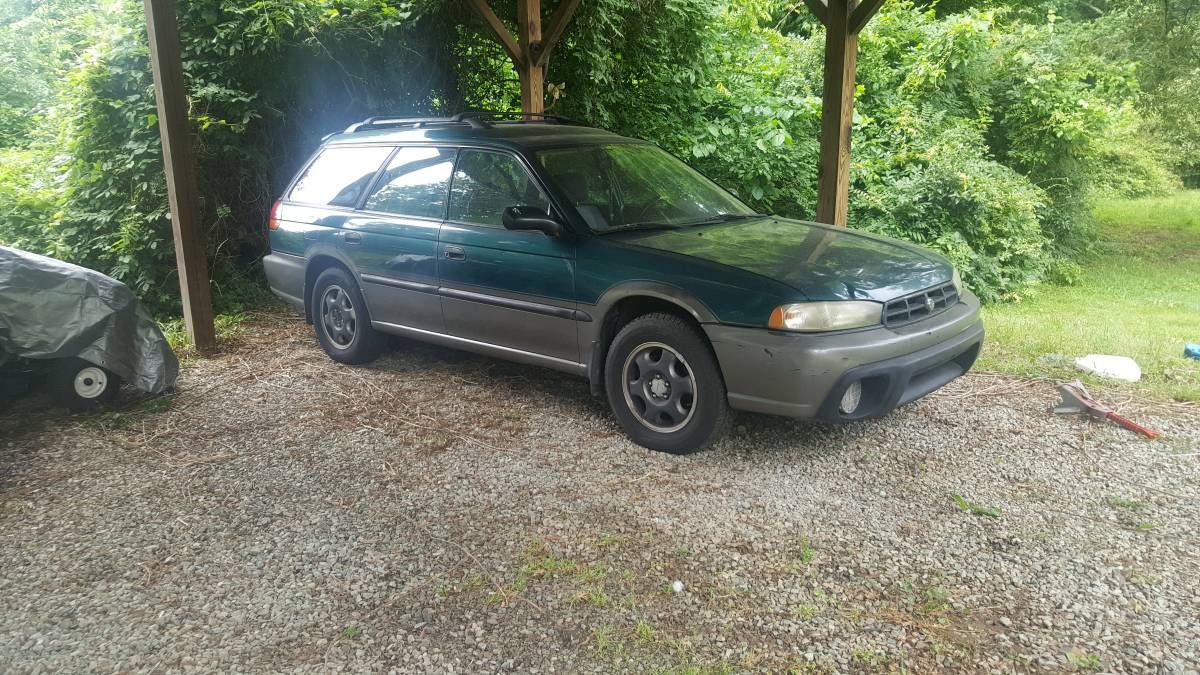
4: Subaru Outback & Forester (1999–2012 – EJ25 Engine)
Before Subaru introduced the FB-series engine, its vehicles were dominated by the EJ-series — particularly the EJ25, a 2.5L flat-four engine that powered countless Legacy, Outback, Forester, and Impreza models between the late 1990s and early 2010s.
While beloved for its unique boxer layout and symmetrical all-wheel drive pairing, the EJ25 developed a well-earned reputation for oil leaks, head gasket failures, and persistent seepage that often appeared even under careful maintenance schedules.
Perhaps the most infamous issue was the head gasket failure, especially in Phase I and early Phase II EJ25 engines. Subaru initially used a multi-layer graphite head gasket that proved inadequate for sealing the engine’s flat design.
Over time, this gasket would deteriorate, allowing oil and sometimes coolant to seep or mix. The leaks were often external, creating slow, messy drips down the sides of the engine block and onto the exhaust, leading to burning smells and visible smoke.
Compounding this was the valve cover gasket problem. Boxer engines have horizontally opposed cylinder banks, meaning the valve covers sit low and wide on either side of the engine. This exposes them directly to gravity and oil splash.
Over time, the rubber valve cover gaskets harden and lose their ability to seal properly. Because of their side-facing orientation, even a minor loss of elasticity leads to significant oil seepage. This is especially visible on the passenger side where leaks can drip onto the catalytic converter, creating a strong odor.
Subaru’s camshaft seals and crankshaft seals were also problematic. These seals would often start to seep oil by 100,000 miles, sometimes earlier.
The front crank seal in particular, became a known weak spot, leaking oil behind the timing belt cover. This was problematic not just due to the mess it created, but because the timing belt and oil should never mix — the belt can degrade or slip if exposed to leaking oil, risking catastrophic engine damage.
Subaru tried to mitigate this with updated gasket materials and sealant techniques around 2005–2007, but the core design issues remained. Boxer engines generate more vibration and have unique pressure dynamics due to their horizontal configuration.
These forces put extra strain on gaskets and seals, making even updated versions of the EJ25 prone to leaks, especially if oil changes are neglected or the PCV system becomes clogged.
The issue isn’t always with cheap materials — it’s a combination of layout, heat concentration, and aging compound integrity. Repairing leaks on an EJ25 is also labor-intensive. Accessing rear seals, oil pans, and even spark plug tube seals often involves removing engine mounts or lifting the engine, driving up labor costs and discouraging routine gasket service.
While Subaru vehicles of this era offer great all-weather capability and a loyal fan base, used models with EJ25 engines must be approached with caution.
A pre-purchase inspection should always include a detailed underbody look for fresh oil stains and evidence of seepage around the head gaskets. Unless properly repaired — often with aftermarket metal gaskets — the leaks will return, often sooner than later.
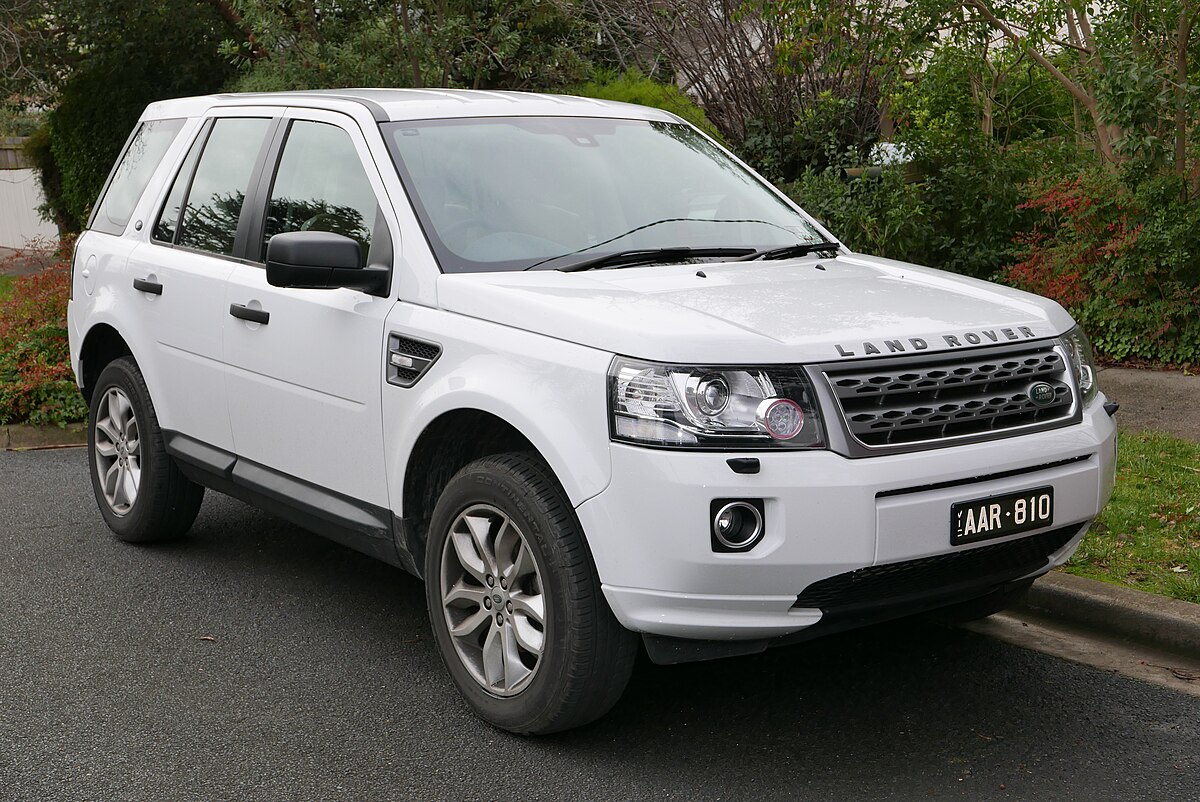
5: Land Rover Freelander (2.5L KV6 Engine)
The Land Rover Freelander, particularly the early 2000s models equipped with the 2.5L KV6 engine, is a poster child for unreliable European engineering in the compact SUV space.
While the Freelander looked stylish and offered luxury SUV features at a lower price point, its powertrain — originally derived from Rover’s aging KV6 platform — proved to be a nightmare of oil leaks, overheating, and general mechanical fragility.
The valley gasket or “intake manifold gasket” is one of the most notorious failure points. Because the KV6 is a 60-degree V6, the intake manifold spans across the top of the engine and seals off the central coolant and oil passages.
These gaskets begin to fail around 60,000 miles, allowing oil to leak internally into the coolant passages or externally into the engine valley. In either case, the result is either mystery oil loss or a visible oil pool trapped between the banks — a fix that requires extensive disassembly.
Adding to the problem, the camshaft seals are poorly engineered and prone to early failure. Land Rover’s use of weak rubber seals combined with engine vibration and heat leads to rapid breakdown. These leaks are difficult to detect without pulling the timing covers, but they often seep oil that migrates down toward the timing belt, contaminating it and risking slippage or failure.
Another persistent issue is the rear main seal, which fails far earlier than it should in many units. The rear main seal leak is not just a nuisance; it’s a labor-heavy repair that involves separating the engine from the transmission.
With labor costs often exceeding $1,200, many owners either ignore it (risking clutch or flywheel contamination) or scrap the vehicle altogether. Given that the Freelander’s resale value is low, such a repair often makes the vehicle uneconomical to maintain.
Even smaller components like the oil cooler lines and valve cover gaskets are prone to seepage. Over time, thermal cycling and vibration cause these lines to weep oil continuously.
Unfortunately, the engine bay is cramped, and oil often collects in hard-to-see places — sometimes only noticeable after oil pressure drops or a warning light appears. These “invisible leaks” are part of what makes Freelander ownership frustrating; they build slowly, then become costly all at once.
Many of these issues stem from Rover’s cost-cutting and poor quality control before being acquired by Ford and later Tata Motors. Though Land Rover as a brand has moved on to better designs, the Freelander’s KV6 engine remains one of the most leak-prone V6s of the modern era.
Most experienced mechanics either warn buyers away or insist that these engines be monitored religiously for early signs of gasket failure.
In short, the Freelander’s elegant exterior hides a deeply flawed mechanical core. While its off-road capabilities and luxury aspirations are appealing, the constant oil leaks — paired with costly repairs — make it one of the most maintenance-intensive compact SUVs you can own. For those unwilling to turn wrenches regularly, this vehicle is best left in the rearview mirror.
Also Read: 5 Cars With the Best Under-Body Shielding and 5 With Rust-Prone Floors
When it comes to long-term car ownership, the difference between a rewarding experience and a constant headache often comes down to the little things, like whether or not your engine can hold its oil. Oil leaks may not always be catastrophic, but they’re rarely benign.
They start off as stains in your driveway or smells in your cabin, and before long, they can erode gaskets, damage nearby sensors, or starve your engine of critical lubrication. In that sense, understanding which vehicles are prone to leaks — and which ones are not — can make all the difference in how long and how happily you keep your car.
After evaluating some of the best and worst offenders in this regard, one thing becomes clear: not all engines are built with leak prevention in mind. The best-performing engines — like those in the Toyota Corolla, Lexus RX 350, or Honda Accord — reflect a deliberate, thoughtful approach to engineering.
They use better sealing materials, smarter layouts, and stress-tested designs that hold up under heat and mileage. These cars don’t just run well — they run clean. It’s why they’re often found on roads long after other vehicles have given up.
These engines also prove that a leak-free experience doesn’t have to come from premium models alone. Cars like the Mazda3 and Subaru Outback (with the newer FB25 engine) show that even mainstream automakers can get it right when they prioritize quality and long-term performance over cost-cutting or complexity.
The reduced stress on seals, simpler component access, and balanced operating pressures all contribute to an engine that remains sealed over the years, which translates directly to lower costs and less hassle for the owner.
In stark contrast, the vehicles known for persistent oil leaks — like the BMW E90, Mini Cooper R56, or Dodge Journey — highlight how engineering shortcuts, poor material choices, or unnecessarily complex layouts can sabotage reliability. These are vehicles that demand constant attention under the hood.
Even when repairs are done properly, leaks often return, and the cost of fixing them can be significant. For many owners, the joy of owning a performance-oriented or stylish vehicle quickly turns sour as oil leaks become a regular (and expensive) part of life.
Take the Subaru EJ25 engine, for example — it illustrates how even beloved, high-selling engines can suffer from deeply rooted design flaws. Early head gasket failures and external oil leaks were the norm, not the exception, for a generation of Subaru drivers.
Meanwhile, the Land Rover Freelander’s KV6 engine became so notorious for internal leaks and sealing issues that it remains a warning to used SUV buyers today. In these cases, oil leakage isn’t just a quirk — it’s a defining trait that significantly impacts the car’s long-term value and reliability.
Ultimately, an oil-tight engine isn’t just a mark of good engineering — it’s a signal of respect for the end user. It means the manufacturer took the time to test materials, evaluate how heat affects gaskets, and consider how real-world driving might wear on seals and housings.
It means that the vehicle was built not just to run, but to last. For buyers who plan to keep a vehicle for years, that durability matters far more than horsepower, infotainment options, or trim packages.
As automotive technology continues to evolve, we hope that leak prevention becomes a more consistent priority across all brands and segments. Until then, knowing which engines are built to stay dry — and which ones are nearly guaranteed to leak — can help you avoid costly surprises and keep your vehicle running strong well past the 100,000-mile mark.
In the end, oil leaks are more than a nuisance — they’re a measure of how well a car was built to endure. Choose wisely, and your driveway and wallet will thank you.
